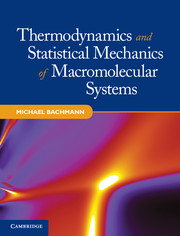Book contents
- Frontmatter
- Dedication
- Contents
- Preface and outline
- 1 Introduction
- 2 Statistical mechanics: A modern review
- 3 The complexity of minimalistic lattice models for protein folding
- 4 Monte Carlo and chain growth methods for molecular simulations
- 5 First insights to freezing and collapse of flexible polymers
- 6 Crystallization of elastic polymers
- 7 Structural phases of semiflexible polymers
- 8 Generic tertiary folding properties of proteins on mesoscopic scales
- 9 Protein folding channels and kinetics of two-state folding
- 10 Inducing generic secondary structures by constraints
- 11 Statistical analyses of aggregation processes
- 12 Hierarchical nature of phase transitions
- 13 Adsorption of polymers at solid substrates
- 14 Hybrid protein–substrate interfaces
- 15 Concluding remarks and outlook
- References
- Index
11 - Statistical analyses of aggregation processes
Published online by Cambridge University Press: 05 May 2014
- Frontmatter
- Dedication
- Contents
- Preface and outline
- 1 Introduction
- 2 Statistical mechanics: A modern review
- 3 The complexity of minimalistic lattice models for protein folding
- 4 Monte Carlo and chain growth methods for molecular simulations
- 5 First insights to freezing and collapse of flexible polymers
- 6 Crystallization of elastic polymers
- 7 Structural phases of semiflexible polymers
- 8 Generic tertiary folding properties of proteins on mesoscopic scales
- 9 Protein folding channels and kinetics of two-state folding
- 10 Inducing generic secondary structures by constraints
- 11 Statistical analyses of aggregation processes
- 12 Hierarchical nature of phase transitions
- 13 Adsorption of polymers at solid substrates
- 14 Hybrid protein–substrate interfaces
- 15 Concluding remarks and outlook
- References
- Index
Summary
Beside receptor-ligand binding mechanisms, folding and aggregation of proteins belong to the biologically most relevant molecular structure formation processes. While the specific binding between receptors and ligands is not necessarily accompanied by global structural changes, protein folding and oligomerization of peptides are typically cooperative conformational transitions [246]. Proteins and their aggregates are comparatively small systems. A typical protein consists of a sequence of some hundred amino acids and aggregates are often formed by only a few peptides. A very prominent example is the extracellular aggregation of the Aβ peptide, which is associated with Alzheimer's disease. Following the amyloid hypothesis, it is believed that these aggregates (which can also take fibrillar forms [247]) are neurotoxic, i.e., they are able to fuse into cell membranes of neurons and create pores that are penetrable to calcium ions. It is known that extracellular Ca2+ ions intruding into a neuron can promote its degeneration [248–250].
In this chapter, we will investigate thermodynamic properties of aggregation transitions of polymers and peptides from different perspectives of statistical analysis.
Pseudophase separation in nucleation processes of polymers
We have already discussed why conformational transitions polymers experience in structure formation processes are not phase transitions in the strict thermodynamic sense. This will be similar for the aggregation of a finite number of finitely long polymers, because surface effects are also not negligible in these cases.
- Type
- Chapter
- Information
- Publisher: Cambridge University PressPrint publication year: 2014



